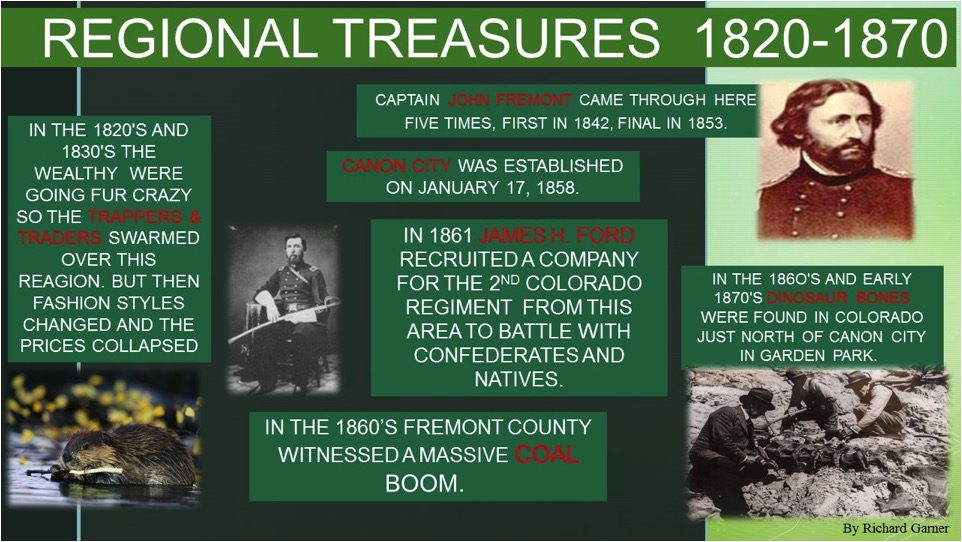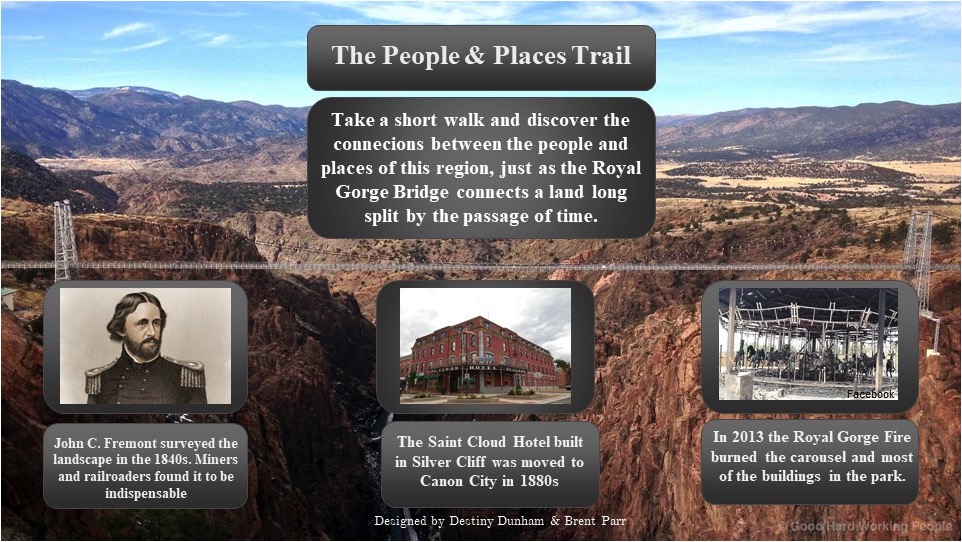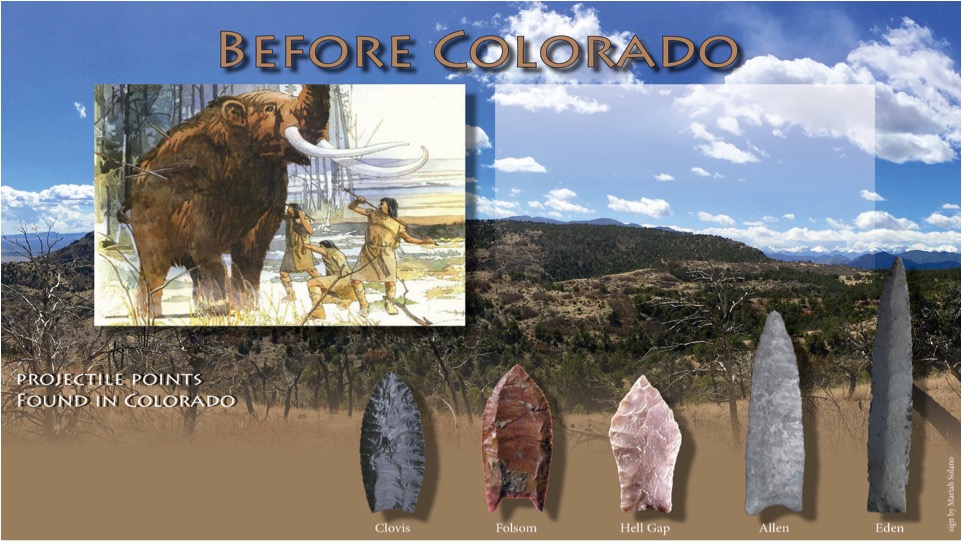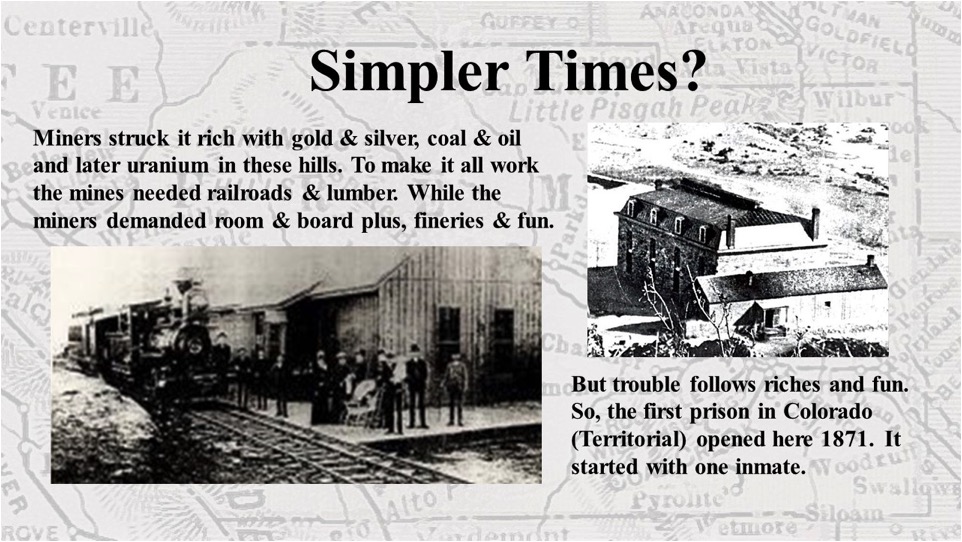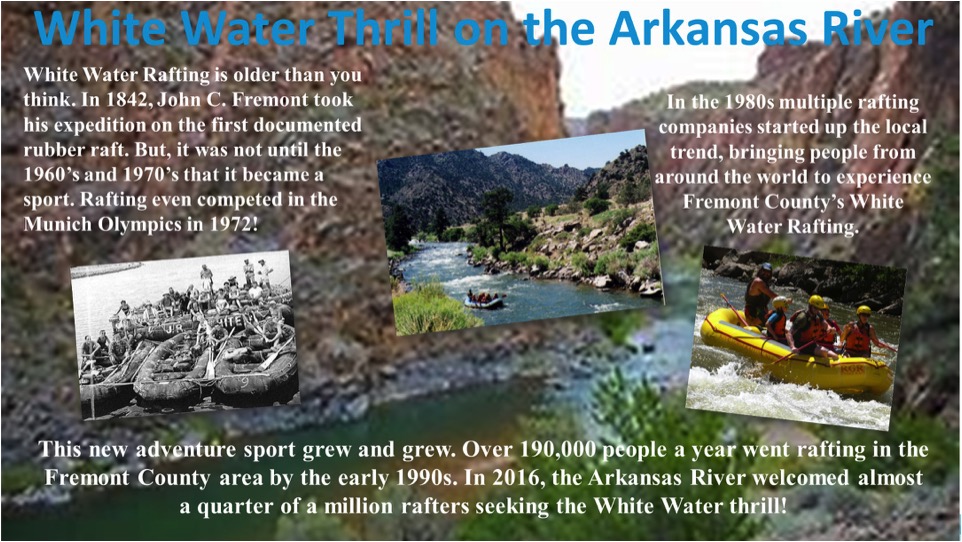It’s All About Connections
Students in Jerry Davis’ Colorado History class designed signage for the People & Places Trail at Pueblo Community College – Fremont Campus (PCC). The trail is a walkable timeline of local and regional events from the time of the first Coloradans and Native Americans to present day.
The assignment: select a period of time and design a poster about a local historical event, place or individual from that time frame; this can include prominent activities that happened and the circumstances that the people lived in.
Front row: Jennifer Burkman, Randy VanWinkle, Destiny Dunham, Brent Parr. Back row: Richard Garner, Ann Guill, Instructor Jerry Davis, Tristan Jacobs. Mariah Solano participated in the class and project, but is not in the photo.
The posters have been made into signs along the trail that focus on these time periods: Pre 1775 | 1775-1825 | 1825-1875 | 1875-1925 | 1925-1975 | 1975 to present
The main objective of the class was for students to understand how each of us is connected to history, the similarities in people’s lives, the patterns that emerge in events, and the changes between ‘back then’ and today. For example, Mr. Davis noted that just like today, the first people in what is now Colorado worried about their families having a safe place to live and good food to eat. For thousands of years the geography and the weather of this wonderful region have affected its residents.
Mr. Davis expressed surprise at the high quality and the wide variety in design of the posters. After he did some minor editing, the Fremont County Historical Society vetted the posters for accuracy and relevancy. The student designer is listed at the bottom of each sign.
Jennifer Burkman, one of the students in the class, chose for her project the year 1929 when the Royal Gorge Bridge was constructed and major Territorial Prison riots erupted. She spent time doing research at the Royal Gorge Regional Museum and History Center looking for firsthand information, letters from people written decades ago, detailed maps and files. Though she thought she knew quite a bit about the riots beforehand, she discovered much more about what had transpired that day. Her research showed that National Guard soldiers manned the walls while the prison guards took control of the chaos below.
Summarizing what she learned from the Colorado History class, Jennifer counted off a list of fascinating subjects: proof of mammoth hunting; Clovis points – which could be called the first “American” designed technology; and explorers Pike and Palmer – the routes they traveled, what they did and didn’t find, and the various current theories on their travels.
Other students chose projects as diverse as:
- the story of the Cotter Corporation uranium mill
- the history of rafting from John Fremont’s trip up the Arkansas River to the explosion of rafting for tourism in the 1970s
- an introduction to the trail at the trailhead describing Zebulon Pike’s time here, the Royal Gorge Bridge and the Royal Gorge fire of 2013
- various types of projectile points
Artifacts also became a part of the project: coal picks and a coal bucket, paddles and a life jacket, and a replica of a small jail made by Jennifer’s husband. These will be permanently displayed inside PCC.


